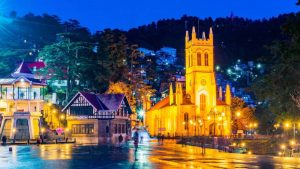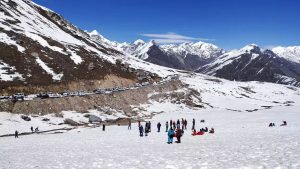Last Updated: July 24, 2019 Shefali Sinha
Spirituality is an innate part of Ladakh, for how else do you think this otherwise remote destination with the unpredictable weather condition, would have survived to the present day? Indeed, a supreme power is watching over it, and you can really feel it the moment you enter this starkly beautiful destination encapsulated by the lofty bare mountains and dotted with sacred Buddhist monasteries. In fact, Ladakh boasts a plethora of mesmerizing monasteries or Gompas that confirms my assertion of gods taking care of this must-visit travel destination. This region of the state of Jammu & Kashmir flaunts monasteries like Hemis, which is the richest monastery in the world, in terms of the collection of Thangkas and scripts. Ladakh monasteries date back to the 11th century, hence one has just so much to witness, learn, and take back home as an experience. So come along with me, as I give you a glimpse of some of the must-see Buddhist temples in Ladakh.
Explore the Affluency at Hemis Monastery
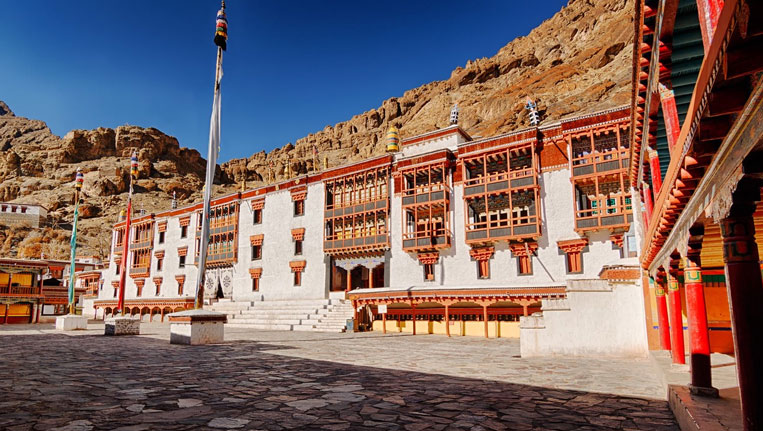
Belonging to the dragon order, Hemis Monastery monastery is one of the famous Buddhist temples and is considered as one of the richest in Ladakh as well. Inside the monastery there is an imposing statue of Guru Rinpoche- an 8th-century Indian Buddhist master. Also, an idol made up of gilded copper of Lord Buddha is present. Revered thangkas are made up of copper, gold, and silver. During the famous Hemis festival, these thangkas are put on public display. This festival is a two-day event and is celebrated on the 10th day of lunar moon according to the Tibetan calendar (in June/July). It is celebrated on the occasion of the birth of the Buddhist Lord Padmasambhava who is reckoned to be the founder of Vajrayana Buddhism in Ladakh.
Gawk Upon the Beauty of Thiksey Monastery
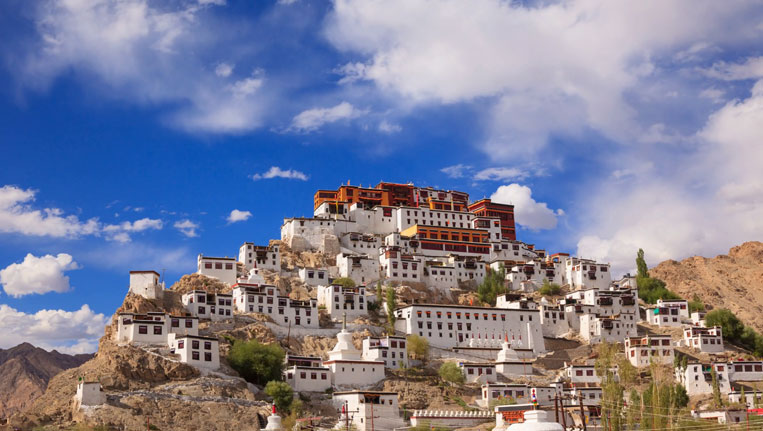
Referred to as “Mini Potala”, Thiksey monastery resembles Potala Palace in Tibet in its architecture. This sacred place of worship belongs to the Geluka order and is situated on a top of a hill in Thiksey village. There are various rooms for the monks, an assembly hall, ten temples and a nunnery in this 12 level structure. Amongst these temples, there is a two-level giant statue of Maitreya Buddha (the expected future Buddha) which is one of the largest statues in Ladakh. This monastery is considered as one of the largest in Ladakh and is painted in red, white and yellow giving a beautiful view of Thiksey Valley.
Witness the Old Roots at Diskit Monastery
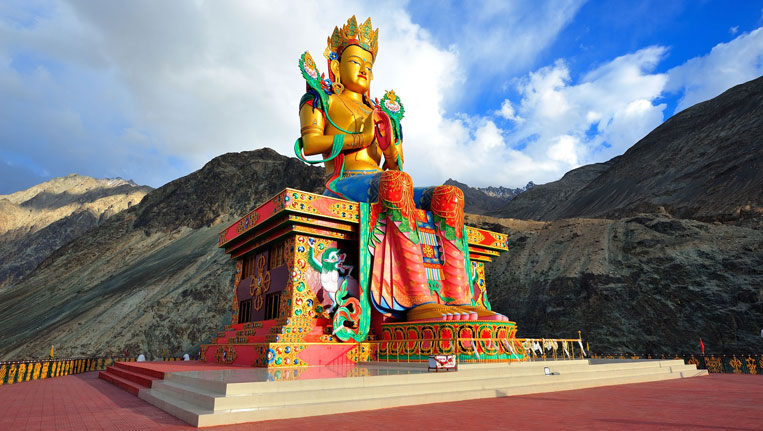
Falling under the Gelugpa Sect or the yellow hat sect of Tibetan Buddhism, Diskit Monastery is the largest and the oldest Buddhist religious home in Nubra Valley. In the hall of this monastery, there is a statue of Cho Rinpoche- the crowned Buddha along with a giant Buddha sitting and facing towards Pakistan over a hilltop. Dosmoche or Desmochhey is the ‘Festival of Scapegoat,’ which is celebrated as the triumph of good over evil. This festival is celebrated in winters when the Khardong Peak is covered in snow but people of Nubra valley gather around to watch the popular mask dance. It is a dance performed by the lamas of the monastery during this festival and is also known as Cham dance.
Spend Time in the Oldest Learning Centers for Monks at Alchi Monastery
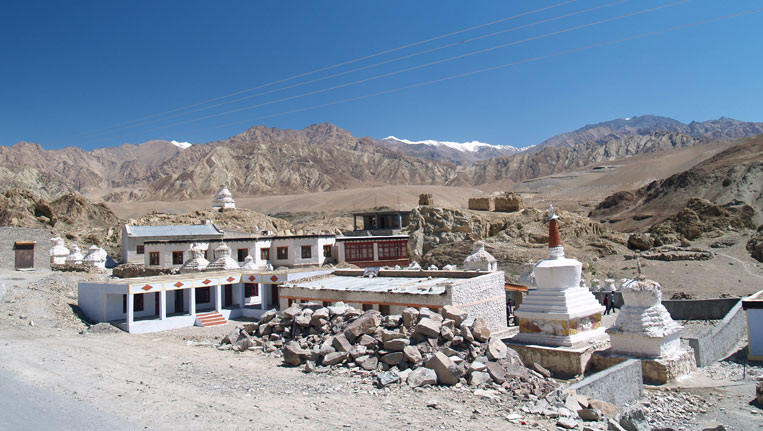
Considered as one of the famous Buddhist temples in Ladakh and oldest learning center for monks as well, Alchi Monastery is a complex of monasteries. Located 70 km from Leh in the Alchi village, this complex consists of various ancient monuments which are dated to different time period. This monastery was founded by Guru Rinchen Zangpo during 958-1055 and is supervised by the management of Likir Monastery. Idols of the three adjoining villages- Alchi, Mangyu and Sumda Chun are considered fine pieces of artwork that have a unique style. This monastery complex has two main temples- Zumsteg and Manjushri with a grand assembly hall. Manjushri temple will require you to first enter the Dukhang or the assembly hall. The temple got its name after being built around the idols of Manjushri looking at all four directions and seated back to back. In the Zumsteg temple, presence of Kashmiri essence can be felt because most of the artwork was done by Kashmiri artists.
Stop by the Land of Moon at Lamayuru Monastery
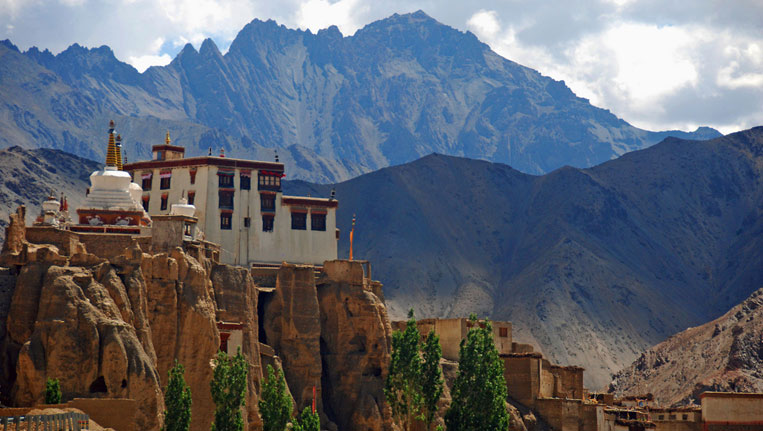
Resembling a cave, Lamayuru Monastery is built on a land whose surface is similar to the moon’s surface. Being built at the same time of Alchi Monastery, Lamayuru belongs to the Red Hat sect of Tibetan Buddhism. This monastery consists of five buildings, which with time have become just ruins. This monastery is situated at an elevation of 3510 meters and is on Srinagar-Leh highway. The 11th century monastery is the residence of 150 monks and is locally referred to as Yung-Drung. A rich collection of artifacts, statues, carpets, wall paintings, thangkas, etc, make it a reason for visit to this marvel. However, the main attraction of this monastery, other than its architecture, is an 11-headed and 1000 eyed image of Chenzing. This place holds a strong history of its existence. According to the legend, an Indian scholar named Mahasiddha Acharya Naropa intentionally dried up the source lake of the town. After that, he established the monastery by placing the base stone. At the southern end of the monastery, there is the oldest temple called as Seng-ge-sgang.
Sight the Honeycomb-Like Phugtal Monastery
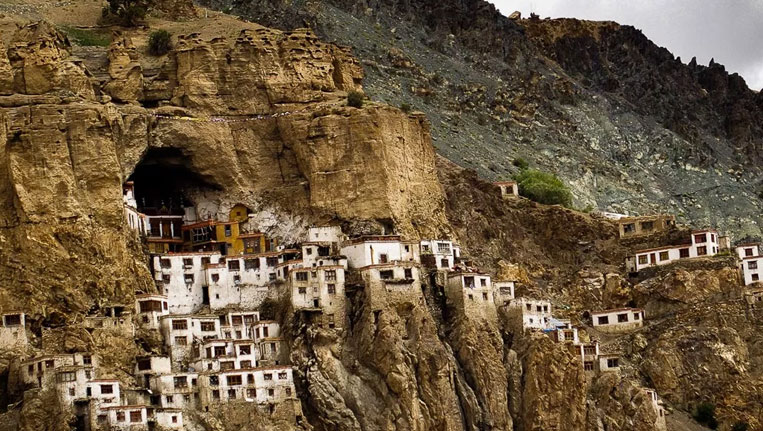
This monastery goes by many names like Phugtal, Phuktal or Phugtal Gompa. Every name in the literal translation in the endangered Zangskari language is the “Cave of Leisure” or “Cave of Liberation”. This monastery still remains the remotest of all and requires one to trek in order to reach it. Road construction is under process, but for now, it’s just your legs that can help you to reach there. Phugtal Monastery appears quite similar to a honeycomb built on rocks. According to the legend, it is believed that the first residents of this monastery were the 16 disciples of Lord Buddha. Now there are images of these disciples on the walls of the cave. Beliefs are also that various prominent scholars and translators have visited this prestigious site. This is the best site to explore the history and culture of Ladakh.
Find Inner Peace at Spituk Monastery
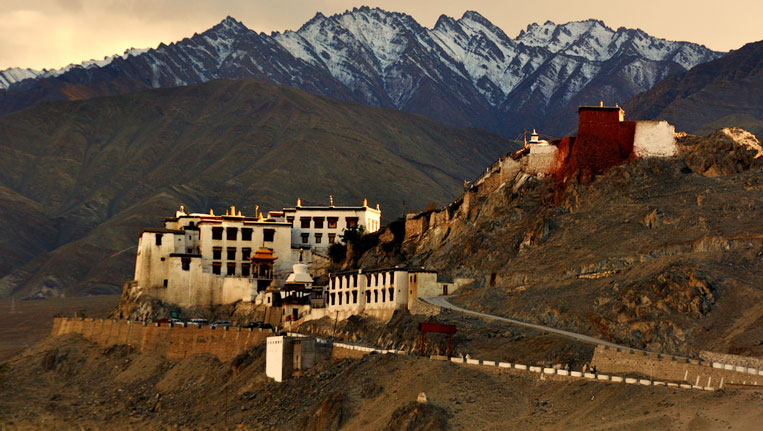
Initially, this monastery belonged to the Red hat sect (Kadampa school) but now it belongs to the Yellow hat sect (Gelugpa order) of Tibetan Buddhism. This sacred place is rich in history and a perfect destination to visit on your holidays to Ladakh. Apart from the red, white and yellow coloured walls that are the jewellery of the monastery, the other attraction is a giant statue of Goddess Kali which is unveiled during the yearly Spituk festival and covered again during the same. The presence of various antique Thangkas paintings, ancient festive masks, arms, etc, are also the attractions of this monastery. Located 8 km from Leh, Spituk Monastery is home to 100 monks. The history of this place is that it was founded by Od-de, elder brother of Lha Lama Changchub Od, on his visit to the land of high passes in 11th Century. Even though he found it but the name of the monastery was given by a translator- Lotsawa Rinchen Zangpo. This monastery is the perfect place to find inner peace.
Witness the Old Rituals of Buddhism at Likir Monastery
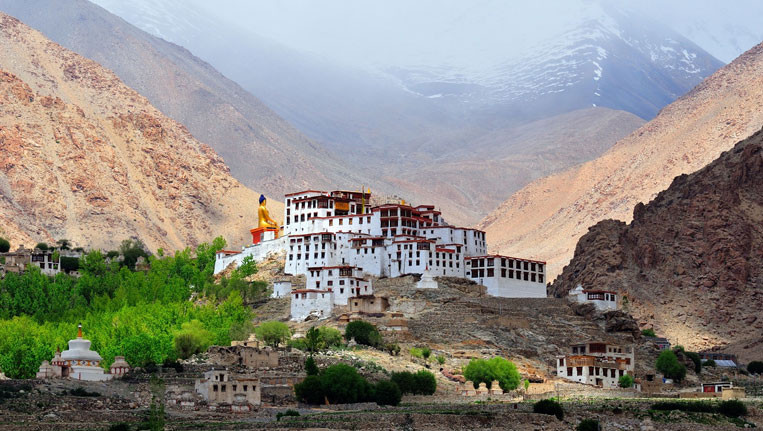
Located on a hilltop in the Likir Valley, Likir Monastery is one of the sacred places to worship and it belongs to the Yellow hat sect (Gelugpa) of Tibetan Buddhism. “Likir” loosely translates to “Naga-Encircled”. This represents Takaso, Naga-Rajas and the Nanda, the great serpent spirits. There is an assembly hall inside the monastery that houses the deities of Sakyamuni, Maitreya, Amitabha, Bodhisattva, and Tsongkhapa. This monastery was established in the year 1065. During the reign of Lhachen Gyalpo, it was built by Lama Duwang Chosje. Being surrounded by the Himalayan range, the Likir Valley’s lifestyle is basically dependent on this monastery. Dosmochey is a festival which is celebrated in the 12th month according to the Tibetan calendar, by the residents of this village quite joyfully.
Experience the Royal Touch at Shey Monastery
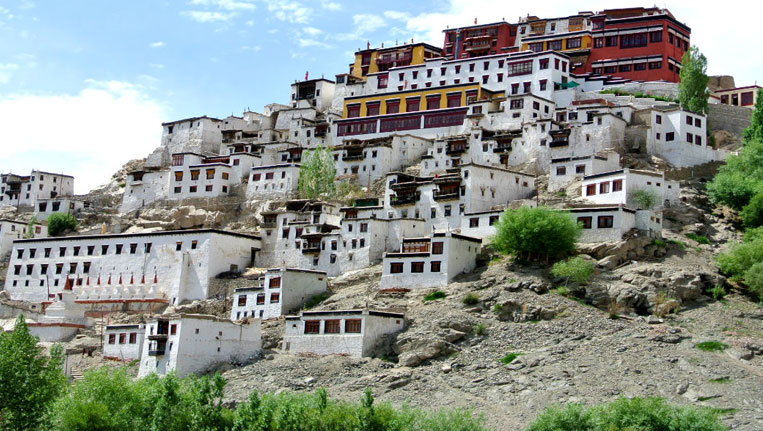
Some 15 km from Leh, this beautiful marvel belongs to the royal family of Ladakh. Situated 11,200 ft above the sea level, Shey Monastery is considered as one of the most gorgeous monasteries of Ladakh. Since it was founded by the first king of Ladakh- Lhachen Palgyi Gon in the 16th century, this monastery has always had a royal touch to it. A 10 meters high statue of gilded copper and gold of Lord Buddha is considered as the biggest attraction of this monastery. This idol of Lord Buddha is different from others because it is Shakyamuni Buddha, which means he is seated. It is considered as the second statue built in Ladakh. Except this, this monastery consists of another stone carved statue of Buddha. Along with this, there are ashes of various lamas and royal dignitaries in this monastery.
Gaze at the One of Architectural Marvels in Ladakh, Phyang Monastery
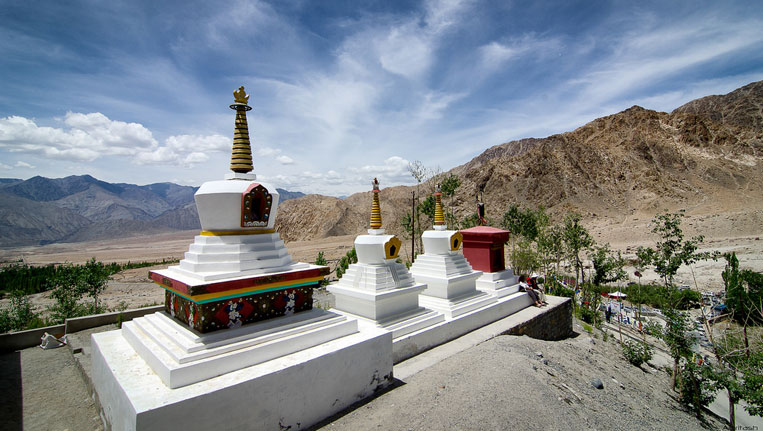
Even though it was restructured recently, its roots still go back to 1515 and is considered as one of the spectacular monasteries in the mountains. Phyang is another monastery which belongs to the Dri-gung-pa sect of Tibetan Buddhism. According to the legend, the foundation of this monastery was kept by Denma Drakpa when he saw the beauty of the same in his dream during his meditation. He saw the protectress Alchi on her blue horse, and thus, he took this as a sign and built this monastery in front of the blue mountains. Being derived from Gang Ngonpo, phyang means blue mountains. This monastery has a huge collection of manuscripts but the most precious thing is the self-drawn image of Milarepa which is inscribed with the Om-Mani-Padme-Hum mantra and it is kept hidden.
Sight a Sacred Stakna Monastery on the Tiger’s Nose Shaped Hill
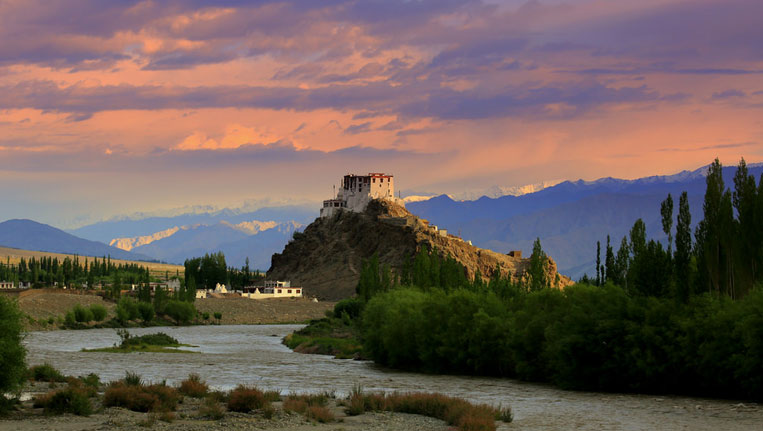
Stakna Monastery, if defined, means a tiger’s nose. Dating back to 16th century, this monastery is situated on a hill which looks similar to a tiger’s nose. This is another monastery which belongs to the Dugpa Sect of Tibetan Buddhism and displays the rich culture of Buddhism. Being one of the famous Buddhist temples in Ladakh, this monastery is home to 30 monks. A sacred image of Arya Avalokiteshvara is centrally placed here and holds a special importance in comparison to the other idols present here. A 7-feet tall chorten of Lord Buddha is placed on the extreme right-hand side of the courtyard. Apart from this, an amazing view of the Indus river is visible from the top of the monastery and luckily it is open for everybody to see.
Gawk at the Rock Roof at Takthok Monastery
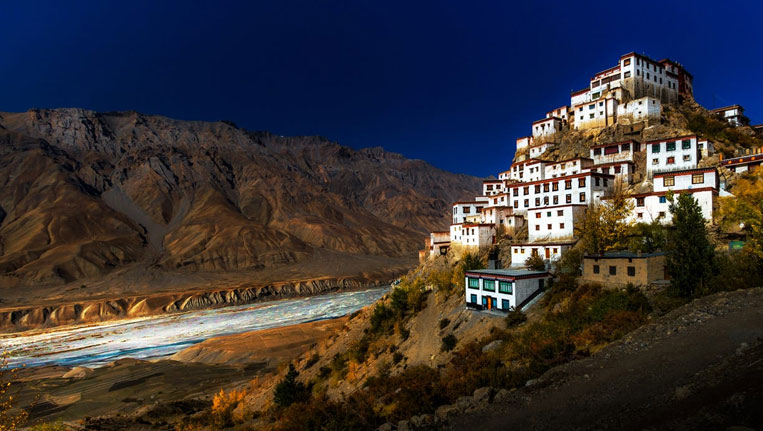
While traveling to Leh-Ladakh, Takthok Monastery is a must visit for you. Thak thok or thag thog literally translates to the “rock roof” and is totally justified as the walls and the roof are all made of rocks. This monastery is home to 55 lamas and it belongs to Nyingmapa- a Buddhist tradition from Tibet. The cave which surrounds this monastery is believed to be the same cave where Padmasambhava meditated during the 8th century. This monastery was built in the 16th century and the main temple area is a dark place and has gloomy walls because of the stains of oil lamps. The attraction of this monastery is Kanjur- 108 volumes of Buddha teachings. Along with this, the other attractions include a mural of Padmasambhava; a painting of Sakyamuni and a temple dedicated to the 14th Dalai Lama.
Gain Knowledge at Rizong Monastery
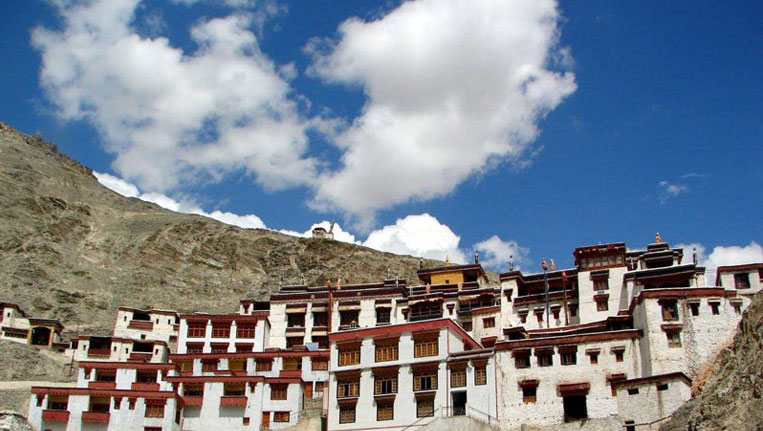
Being located at a distance of 73 km from Leh, Rizong Monastery belongs to the Yellow hat sect (Gelugpa order) of Tibetan Buddhism. This monastery is also called as Yuma Chanchubling. Being a home and a learning sector for the 40 monks, this monastery was founded by Tsultim Nima in 1831. One of the interesting facts of this monastery is that it has books written by the first Sras Rinpoche along with scriptures, the biography of Tsultim Nima, etc, are kept here. At 2 km from the monastery is a nunnery where the nuns practice the chores like spinning the wool, milking and getting oil for the temples. Under the governance of the monastery, there are 20 nuns residing in this nunnery.
Take a Look at Matho Monastery’s Collection of Artifacts
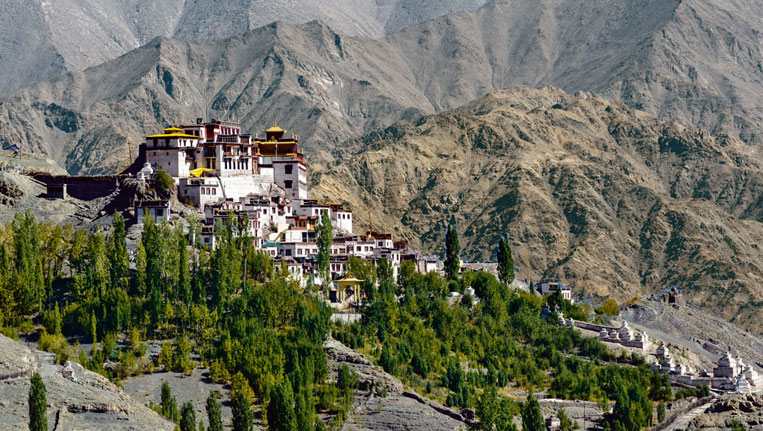
To witness an architectural beauty, Matho Monastery is the right place. Located just behind the Thiksey Monastery, this gompa is the only one to belong to the Sakya sect of Tibetan Buddhism in Ladakh. Even though it is not situated on the highway, it still has managed to be famous amongst the tourists. This monastery was built in 1410 and has a precious collection of Thangkas, sacred paintings being 600 years old, whereas statues of Maitreya and Sakyamuni were brought into the hall in the year of 2005. During the famous Matho Rang Nag festival, the monks of this monastery perform activities with their eyes closed. They say that the reason behind closing their eyes is that they won’t feel scared of dropping. Except for the high tourist visitation during this festival, the other seasons also witness a great number of tourists visiting. They come here and get mesmerized by the scenic view of nature and the nearby village life.
Find the Peace of Mind in Rangdum Monastery
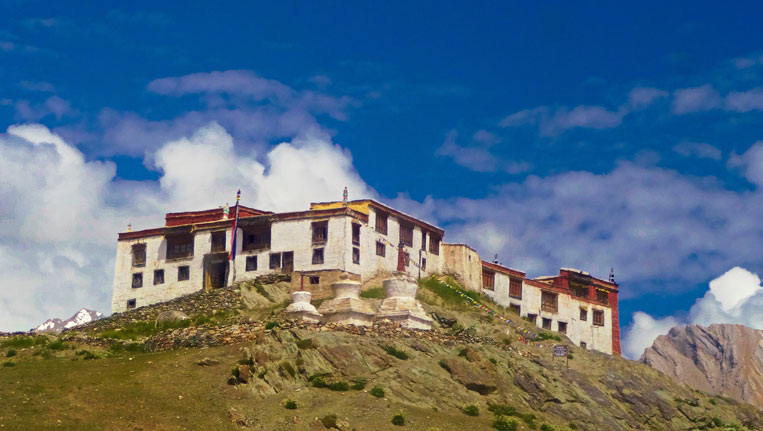
To find inner peace, one must visit Rangdum Monastery which is located in the Suru Valley of Ladakh. You would find a feeling of remoteness in this monastery which would eventually help you in finding the peace that you are looking for. Belonging to the Gelugpa or Yellow Hat sect of Tibetan Buddhism, this monastery has now become a major tourist attraction. A debate has been going on about when was the construction of this beautiful monastery started. Few say it began in the 8th century while few say that it was built around 200 years ago, during the reign of King Tsewang Namgyal of Ladakh. The monastery comprises of a prayer hall which has a great collection of artifacts. Other than this, Yuldo and Tashi-Tongze are the two villages which surround this gorgeous fort-looking monastery.
Spend Time Contemplating at Sumda Chun Monastery
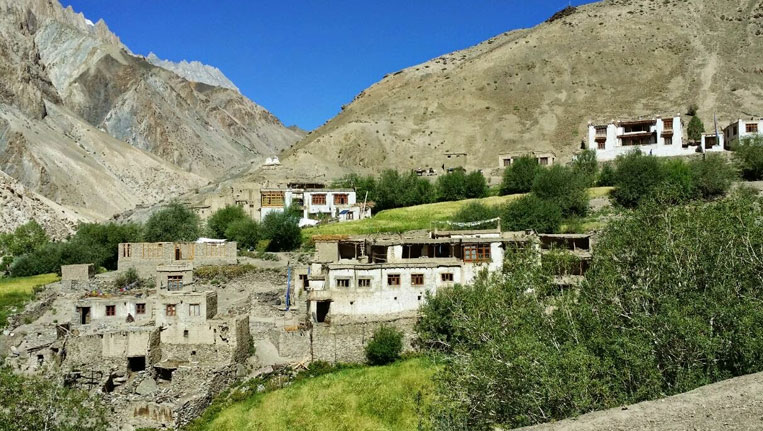
Sumda Chun Monastery is the starting point of Sumda-Mangyu-Alchi Buddhist pilgrimage run. This religious house is considered in the list of best spiritual places in India and consists of a very important temple. This shrine is amongst the three temples which Rinpoche Zangpo discovered in a single night. This stunning monastery was once the most beautiful religious house standing tall in the Sumda valley, surrounded by the great Himalaya but with time, this remote monastery has become a pile of ruins.
Comprising of an assembly hall, two Bodhisattva chappels, the main shrine, a prayer wall, etc. this monastery also has a temple which has an image of four-headed Vairocana and murals of Ratnasambhava, Akshobhya, Amitabha, and Amoghasiddhi. Owing to the fact that this marvel was neglected, it had been listed in the 100 most endangered sites in the World Monument Funds 2006 watch list. This beautiful monastery has some very ancient artwork and that is being preserved through various programmes conducted by some prestigious organizations.
Scrutinize the Long-Forgotten Karma Dupgyud Monastery
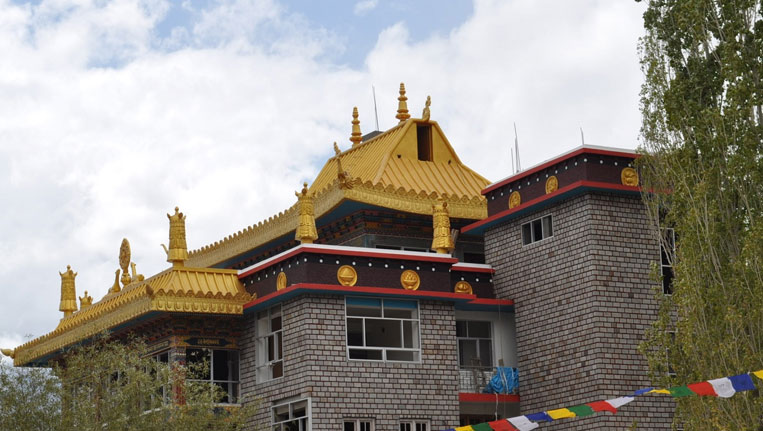
Karma Dupgyud Monastery, also known as Karma Dupgyud Choeling Monastery belongs to a Karmapa sect of Tibetan Buddhism which stands still in Leh. Founded by Lama Chime Dorje Rinpoche in the year of 1973, this beautiful monastery was a school and a home to the monks. The monastery is built in a traditional Tibetan style and till date, the walls of this monastery showcase the Buddhist culture and tradition and is a must-see for every tourist. Initially, this house was started with the sanction of 25 monks but now the number has increased to the involvement of 60 monks. The religious house has a good connectivity from various destinations with Jammu Airport being the closest. Karmapas are the monks who carry out the works of Lord Buddha. This monastery has 17 Karmapas who work towards creating awareness about Buddhism. The monastery’s original compound is built with mud and bricks. This religious house also contains a school, a Dukhang, library, etc.
Lose Yourself in the Colourful Framework of Samstanling Monastery
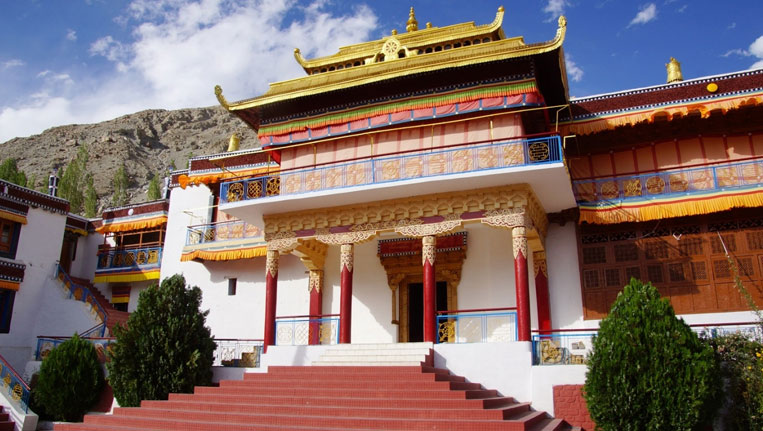
A hundred and forty years old, Samstanling Monastery has been the main tourist attraction in Sumlur Village of Nubra valley for years. Displaying the alluring combination of gold, white and red ocher hues, this monastery was founded by Lama Tsultim Nyima in 1841. Complementing this color combination, red-yellow trees and colorful prayer flags surround this marvel making it look more beautiful and is a residence for 50 monks. Murals and paintings of Lord Buddha, idols of the four heavenly guardians, and other feature of Lord Buddha can be seen in the two assembly halls of this religious house. Since Buddhism believes largely in incarnations, you can witness one in the adjoining guest house. Here you will see a seven-year-old incarnation of Lama Bakula Rinpoche residing in this guest house.
Visit Basgo Bollywood’s Favourite Destinations for Film Shoot in Ladakh
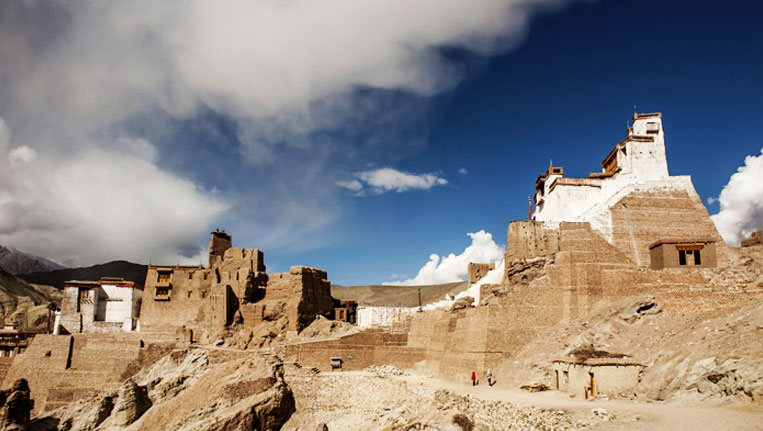
Being the location for various Bollywood songs like Shahrukh khan-Manisha Koirala featuring “Satrangi Re” to being considered as an endangered pilgrim site. Basgo Monastery was built in the 17th century and is an administrative seat for the royal Namgyal family. On your way to Srinagar from Leh, you could find Basgo Monastery appearing as natural as it could be. This monastery surrounded by a palace which was built in the 15th century. Even though this monastery looks simple from outside, the interiors tell us some other story. The presence of various small images showcasing the life of Lord Buddha, murals of various other deities sitting in meditation. This monastery comprises of three temples where the first temple is situated on the top of the hill. Chamba Maitreya is the sole temple which holds a 14 meters high, copper gilded idol of Maitreya Buddha. This form of Lord Buddha is known as the fifth incarnation of Sakyamuni and the “future Buddha”. “The Divine Peak Of Stability”- as known to the Tibetans, Basgo Gompa surely has to offer a lot to the pilgrims, from a dive in the history to the serene view.
Behold the Sight of the Sister of Spituk Gompa, Sankar Monastery
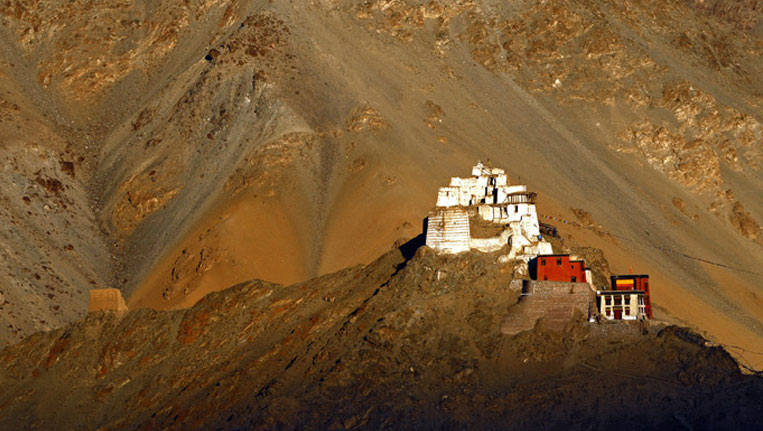
The residence of – Kushok Bakula who was the head of the Yellow hat sect or the Gelugpa sect of Tibetan Buddhism. A total of 25 monks belong to the sect, out of which only a few are the permanent residents at this gompa. This monastery is the sister establishment of Spituk Monastery and is considered as a sacred place of worship. The walls of this gompa are painted with the images of Lord Buddha and the monastery contains rock-pillar structures which just blend with the clear sky and give an oozing feeling to every tourist. After the demise of the most senior lama in 2004, there is a head portrait of Kushok Bakula placed in the assembly hall. At the entrance of this hall, the doors are painted with images of the guardians of four directions. When you enter the Verandah, you will notice a monk holding the “Wheel of life”.
Take a Tour of the Home of a Primeval Temple, Wanla Gompa
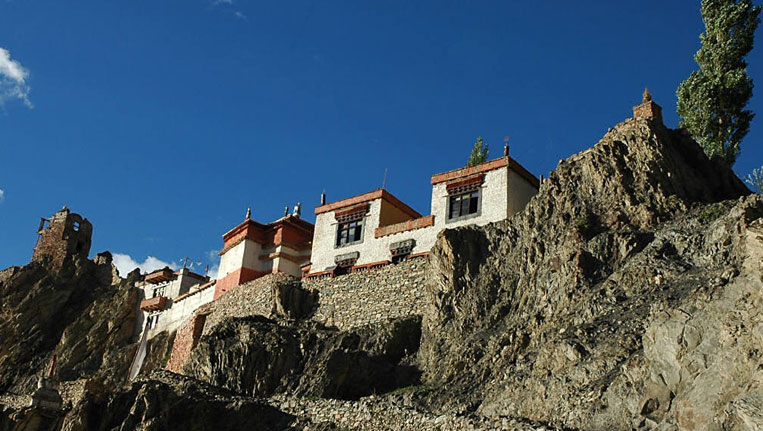
A subsidiary of Lamayuru, this historic Buddhist monastery resides in a part of the Wanla village which lies in India controlled Kashmir. One of the oldest temples that exist in Ladakh is a three-storied Avalokiteshvara temple. The Lamayuru Monastery appoints a lama to do the daily rituals at Wanla and maintain the temple for the visitors. This temple also contains an image of Avalokiteshvara with 11 heads and 1000 eyes. The uniqueness of this temple is that it contains Drikung Kagyu prayer hall and it is well preserved. According to the legend, the palace was built in the 12th century and the monastery was added later on in the 14th century.
Explore the Hidden Dzongkhul Monastery with its Own Cave
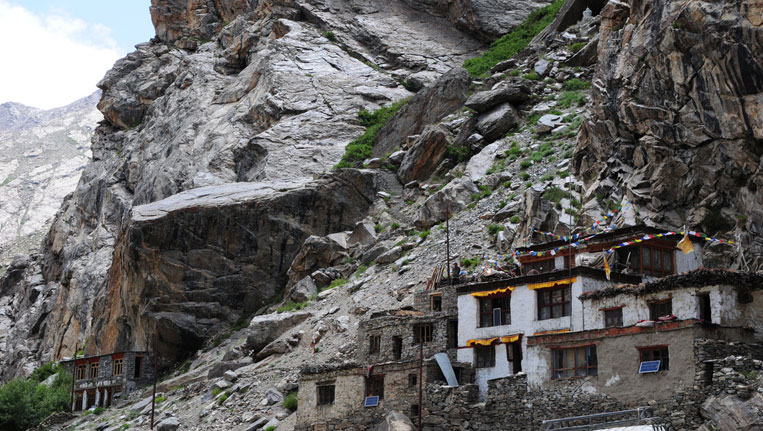
A dark and small monastery located near the foot of a wide valley which leads to the pass known as Umasi-la. This rarely visited monastery by tourists is an important shrine for the Buddhists. Naropa, a celebrated Indian Buddhist who was also a yogi and a monk from the Vikramshila University of Bihar is the person who is always associated with the monastery’s foundation. Few say that in one of the caves, in which the monastery is built, used to be his meditation place and that is why this monastery is dedicated to him. The religious house has some gorgeous frescoes done on the walls and the other attraction being the footprint of Naropa on a stone. This stone is visible from the entrance itself. This cave is dark, quiet and slightly claustrophobic.
Pay a Visit to Stongdey, the Second Largest Monastery of Ladakh
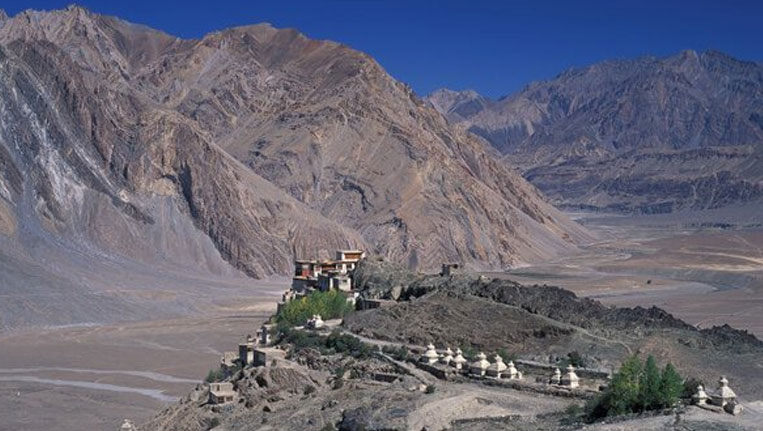
A flourishing monastery amid the beautiful Himalayan range, Stongdey Monastery is located 20 km north of Padum. After Karsha Monastery, this is the second largest monastery in Zanskar. Lama Lhodak Marpa Choski Lodos founded this monastery in 1052. This monastery displays a great work in paintings on the walls and beautiful shrines. This monastery has something unique, which is a temple dedicated to the guardians in a celestial form called as Gon-Khang. Another attraction of this monastery is dependent on the Tibetan calendar. According to the calendar, on the 28th and 29th day of the 11th month, monks will celebrate a festival known as Gustor Festival. This festival is celebrated in a very happy manner where the monks perform their sacred dance.
Trace the Ancient Roots of Buddhism at Sani Monastery
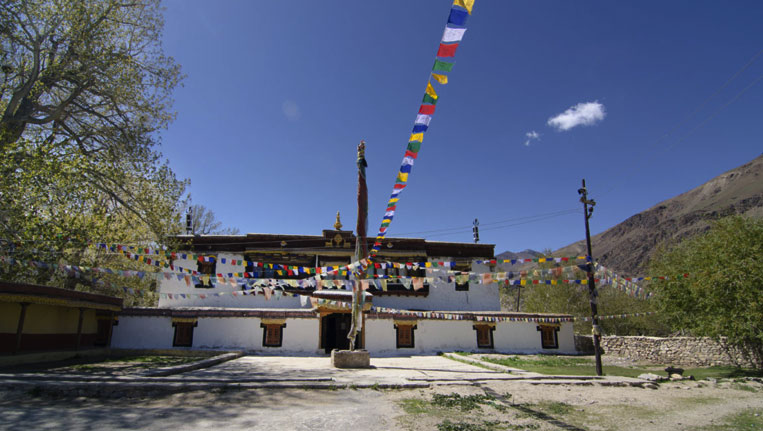
Located in the Sani Village, about 6 km northwest from the center of Padum, this monastery is considered as the oldest in the region of Ladakh as well as Zanskar. The only monastery in Zanskar that has nuns, this monastery belongs to the Drugpa school of Tibetan Buddhism, just like Dzongkhul Monastery. This monastery is built on a flat land and is in the shape of a castle. This religious home contains a prayer hall and a Kanika chorten, probably of the 2nd century, and next to this chorten are ten stones in a standing position with inscriptions on them in the Tibetan language.
Learn about Buddhism Under the Guidance of H.H. Dalai Lama’s Younger Brother at Karsha Monastery
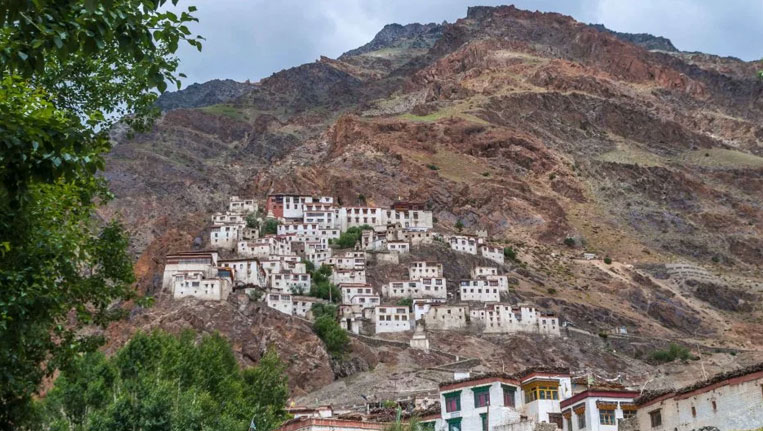
This monastery was founded under the order of yellow hat sect of Tibetan Buddhism by Phagspa Shesrab and is one of the famous Buddhist temples in India. Karsha Monastery has a collection of various shrines and beautiful paintings, some even made by Lama Dzada Dorje. Along with this, the other attractions include few old rock carvings and various paintings from Rinpoche time which depict his life also. This monastery runs under the guidance of His Holiness Dalai Lama’s younger brother and it has been an active shelter for about 100 monks. This beautiful monastery provides a beautiful view and helps you explore the rich history of this place as well as the Buddhism.
Witness a 9-Meter High Maitreya Buddha at Mulbekh Monastery
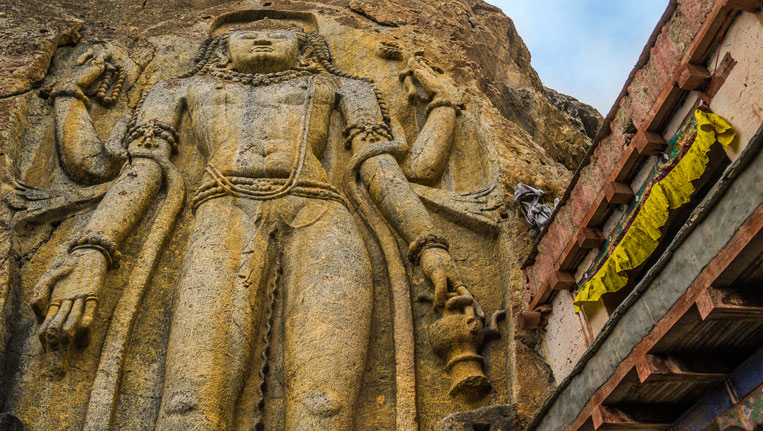
Situated on a hilltop and at an elevation of 3304 meters (10839.9 ft), Mulbekh Monastery holds a picturesque view. How rich is the place in history will be answered by your visit to this interesting monastery. This religious house is located 45 km from Kargil and what actually catches the attention of tourists is the 9 meters high, rock-carved statue of Maitreya Buddha. Long ago few researchers claimed that the statue resembled Lord Shiva and not Maitreya Buddha. But in various ancient records, this monastery has been talked about and the mention of the statue presenting Maitreya Buddha has always been done. Also, this monastery has two gompas which follow the Drukpa and Gelugpa sectors of Tibetan Buddhism respectively.
Go See the 108 Volumes of Kangyur at Stok Monastery
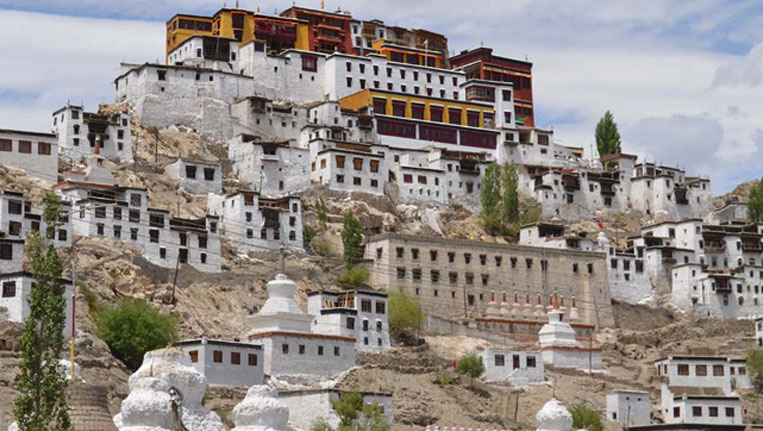
Built in the 14th century by Lama Lhawang Lotus, this monastery contains all the 108 volumes that are a part of Kangyur which is an interesting fact for the tourists. Belonging to the Yellow Hat sect of Tibetan Buddhism, Stok Monastery is situated 15 km from Leh. amongst the various tourist attractions, the 71 feet structure of Lord Buddha has always got the attention of the tourists. Amongst this, the monastery contains a museum which has a collection of unique artifacts like some unique Thangkas painting, Buddhist art, coins, arms, etc. During the celebrations of the festival, the lamas perform the traditional mask dance, also called as Cham dance. Besides the monastery, there is the Stok Palace, around 2 km from here which has also managed to grab the attention of the visitors. This palace is also the summer home of the royal family of Ladakh.
Have a Trekking Experience at Namgyal Tsemo Monastery
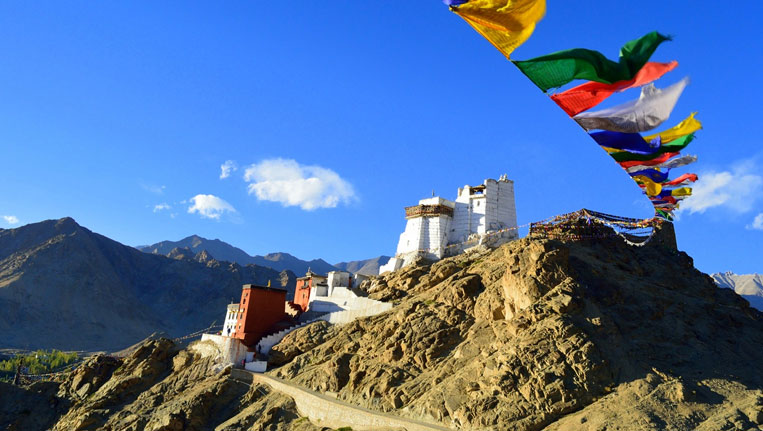
Founded in the 15th century, Namgyal Tsemo Monastery has been standing still in Leh, Ladakh. It was King Tashi Namgyal who discovered this monastery as he was a follower of Buddhism and hence the name. Despite being situated on a top hill, what actually grabs the attention of the tourists is a three-storied, golden idol of Maitreya Buddha. Except this, the monastery contains a great collection of paintings, temples with frescos, a view of snow-covered Zanskar Range, a collection of ancient manuscripts, etc. Make it a must-visit, if you have a tinge for trekking.
Be a spectator of the Charming Cham Dance at Chemrey Monastery
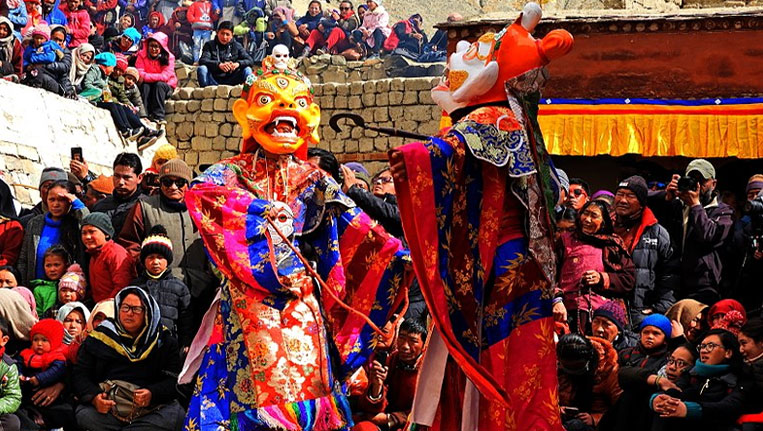
1664 was the year when Lama Tagsang Raschen found the Chemrey Monastery and dedicated it to King Sengge Namgyal. Despite the alluring environment and the contrasting architectural marvel, tourists are usually attracted to the one-storey high statues of Padmasambhava. Other attractions include some scripture with their titles written in golden and silver letters. According to the 9th month of the Tibetan calendar, a Chemry Angok festival is celebrated here on the 28th and 29th day. The lamas perform their sacred dance and entertain the spectators. During this festival, the place comes alive and it is a must-see thing. The religious house comprises of a number of shrines, a lama temple, and two assembly halls.
Relish the Unparalleled Beauty of Lingshed Monastery
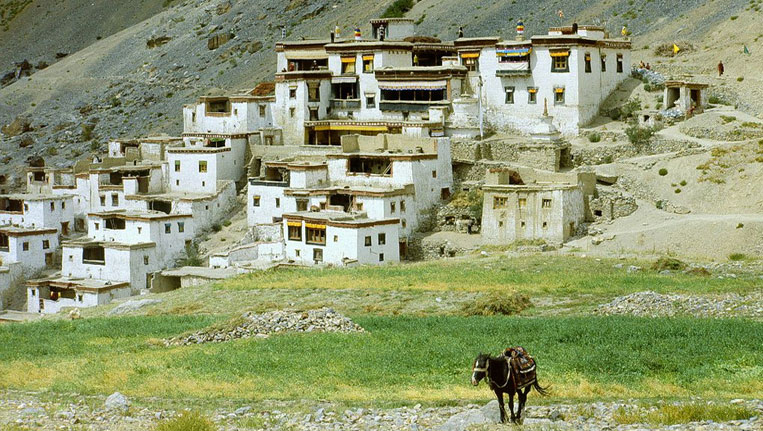
Founded by Changzems Sherabs Zangpo after it was discovered by Rinchen Zangpo. Belonging to the Gelugpa Sect of Tibetan Buddhism, this monastery is located near the Lingshed Village. The monastery complex is suitable for the revered lamas who visit this place or for Ngari Rinpoche. Other than this, at the central temple complex, there are rooms, kitchen and the monastery mainly comprises six principle shrines. This monastery serves the villages which surround it. This religious house is a residence of 60 monks who have decided to serve and worship Lord Buddha for the lifetime.
Enjoy a Peaceful Visit at Bardan Gompa
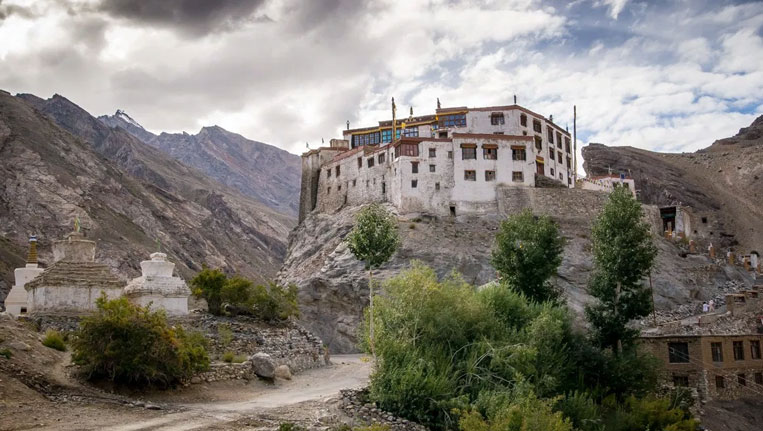
Located 12 km south of Padam, Bardan Gompa or monastery is a 17th-century architectural beauty. Belonging to the Dugpa-Kagyud order, this monastery holds an interesting fact that it was one of the first centers to follow this order. Being a pilgrim site, this place has a huge assembly hall which is beautified through some amazing idols of the Buddhist deities and there are some clay, wood, bronze, and copper made stupas which draw one’s attention. Along with this, the walls of this monastery are painted with various beautiful paintings depicting the history and importance of Buddhism. The monks of this monastery participate during the unveiling of the idol in Sani Monastery.
Ladakh tourism would be incomplete without these sacred shrines, hence there is no way that you should keep visiting monasteries out of your itinerary. If you think this blog was helpful, please share it with your friends, family or even acquaintances and don’t forget to give it a big thumbs-up.
If you are thinking of going to Ladakh anytime soon, then we can be the right people to book your Ladakh holiday packages. Just call at +91-9212553109 or drop an email at info@tourmyindia.com and we’ll be happy to plan a Ladakh tour for you.
Published: 01 Aug, 2018
Shefali Sinha is someone who has always been in love with new places and has always tried to explore the unexplored. Traveling for her has always been an escape from the city life. Trying different cuisines, having exotic beverages and capturing every moment in the camera lens are her ways of enjoying life.


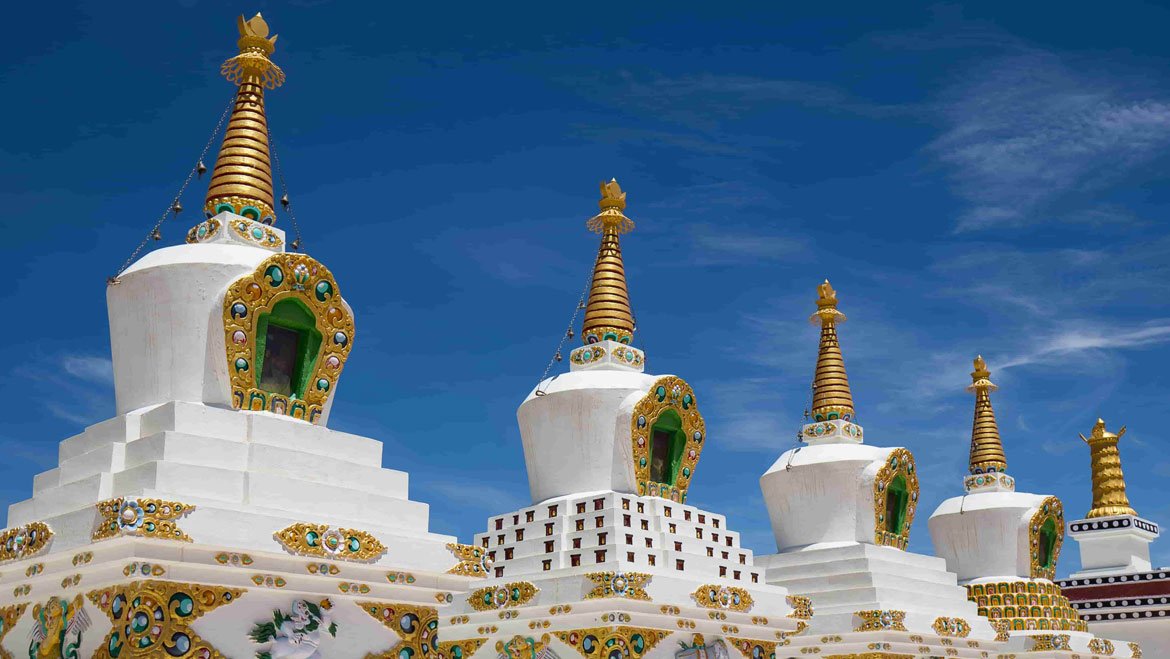
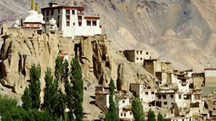 10 Nights / 11 Days
10 Nights / 11 Days 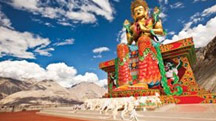 4 Nights / 5 Days
4 Nights / 5 Days 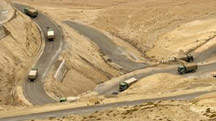 6 Nights / 7 Days
6 Nights / 7 Days 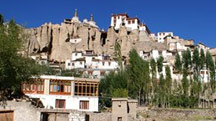 8 Nights / 9 Days
8 Nights / 9 Days 



























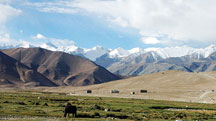 4 Nights / 5 Days
4 Nights / 5 Days 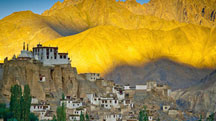 3 Nights / 4 Days
3 Nights / 4 Days 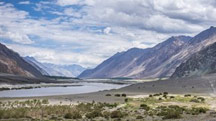 9 Nights / 10 Days
9 Nights / 10 Days 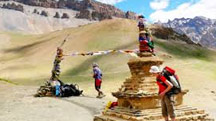 7 Nights / 8 Days
7 Nights / 8 Days 


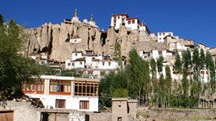 6 Nights / 7 Days
6 Nights / 7 Days 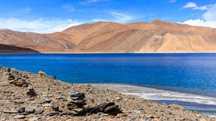 8 Nights / 9 Days
8 Nights / 9 Days 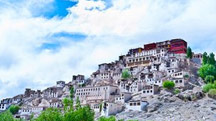 8 Nights / 6 Days
8 Nights / 6 Days 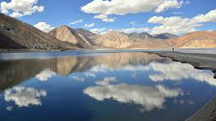 6 Nights / 7 Days
6 Nights / 7 Days 
